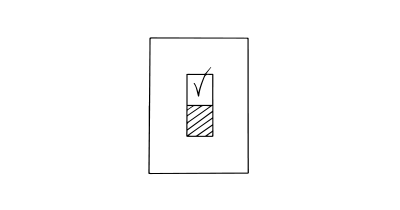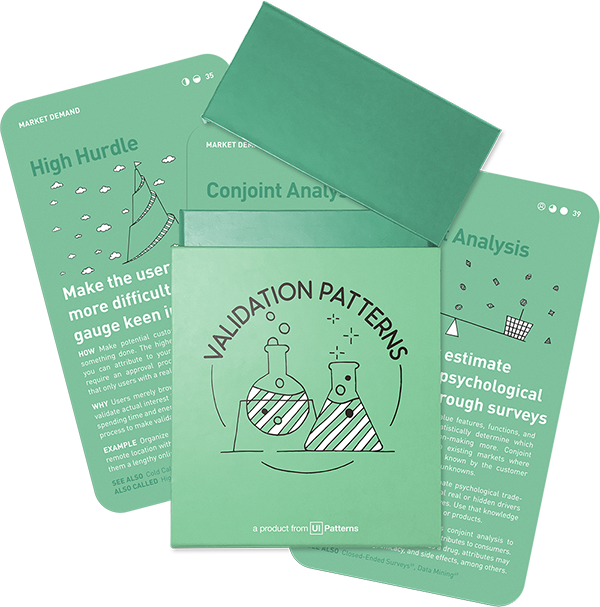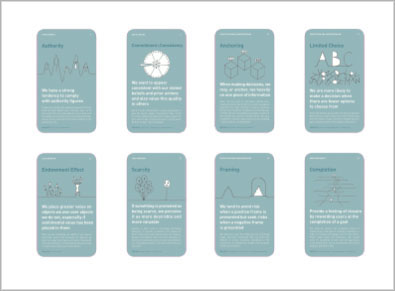
How: Test whether your value proposition is strong enough for potential customers agreeing to switch to your new solution and what you need to do to make the switch happen. Let users engage in switching behavior like using a migration tool or letting them import data from other systems.
Why: In an established market with strong competitors it is not enough to build the best product, but also to make switching to your solution effortless.
Discover which customers are more likely to switch and identify the problems that would make them switch to your solution. Investigate how customers solve these problems today and develop alternative designs that address their expressed pain points. Test these alternatives with potential switchers by demonstrating how your solution differs and solves their specific issues better than existing options. By testing what makes customers agree to switch, you can better prioritize features and improvements that are most likely to drive adoption among your target customers.
Getting users to “Agree to Switch” is a powerful method to test the strength of your product’s value proposition against competing solutions. The foundation of this strategy lies in understanding if customers perceive your product as superior enough to make the switch. This method is especially crucial in markets with robust competitors, where merely having a superior product is not enough. The transition to your product must be seamless and as effortless as possible for the potential customer.
Unlike other methods that focus on developing a product’s features or improving its usability, “Agree to Switch” concentrates on the transition process. It highlights the importance of minimizing friction for users switching from a competitor’s product. This method takes you a step further from merely understanding your users’ needs to actively engaging them in switching behavior like using a migration tool or importing data from other systems.
As you apply the test, consider the following:
- Identify barriers. Understand what might prevent users from switching to your product. These could be data migration issues, steep learning curves, or even emotional attachment to the previous product.
- Engage users in switching behavior. This could mean developing a user-friendly migration tool or facilitating data import from other systems. The goal is to make the transition process as seamless as possible.
- Iteratively improve the switching process. Rather than a big bang research, release product changes from insights continously and keep testing for how often customers are willing to switch. Use feedback from users to continually refine the switching process, reducing friction and making it increasingly effortless.
Choose the “Agree to Switch” method when you have a product ready for the market, and your primary challenge lies in convincing users to transition from competing solutions. It is particularly beneficial in saturated markets, where product quality alone might not be sufficient to win customers. This method can help you understand and overcome the barriers that prevent users from adopting your product.
Pairing “Agree to Switch”
“Agree to Switch” can be effectively paired with the “Product-Market Fit Survey” and “Customer Discovery Program” methods. The “Product-Market Fit Survey” can provide necessary insights on how well your product meets the market needs, while the “Customer Discovery Program” can offer a deeper understanding of your users’ needs and pain points. These insights can inform your “Agree to Switch” strategy, helping you tailor the transition process to your potential customers’ needs and preferences.
For potential customers, overcoming the resistance to change is rooted in their comfort with their current solutions. Understanding this requires empathizing with the user and understanding the emotional and practical barriers they might face. Address these barriers proactively in your switch strategy to increase the likelihood of users choosing your solution.
Measuring success
The effectiveness of the “Agree to Switch” method can be measured by tracking purchase conversion rates and the number of follow-ups. A higher purchase conversion rate indicates that users find your product’s value proposition compelling enough to make the switch. The number of follow-ups can provide insights into users’ engagement with the switch process and their willingness to overcome potential barriers. Consider these metrics in tandem with user feedback to refine your switch strategy continuously.
A collection of 60 product experiments that will validate your idea in a matter of days, not months. They are regularly used by product builders at companies like Google, Facebook, Dropbox, and Amazon.
Get your deck!
